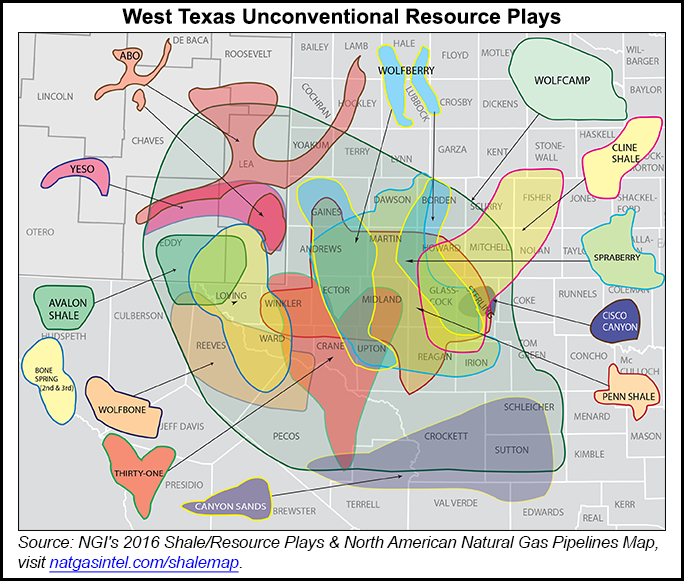E&P | NGI All News Access | Permian Basin
Southwest Research Institute Initiatives to Aid Producers in Permian, Austin Chalk
The San Antonio-based Southwest Research Institute (SRI) is developing research initiatives to help oil and gas producers get the most out of the Permian Basin and the Austin Chalk.

The Permian Basin Joint Industry Project follows a similar SRI research initiative launched in 2011 for the Eagle Ford Shale. SRI said it will help producers “use mechanical stratigraphic and structural geologic data to improve productivity amid low oil prices.”
SRI conducted research of various formations in the Permian in 2015 “to characterize mechanical properties, deformation styles and tectonic settings.” SRI will provide a variety of geologic data “important to well planning and performance” to members of the project.
“We help the energy industry understand geology to improve the likelihood of success before investing millions of dollars into drilling thousands of feet of lateral wells,” said David A. Ferrill, director in SRI’s geosciences and engineering division. “The conventional wisdom is that you can drill anywhere in the Permian and it will produce oil, but that’s not the case with drilling in unconventional reservoirs. Natural fractures and other structures vary significantly throughout the basin, which influences the effectiveness of the lateral wells.”
SRI said it is also starting up field research in the Austin Chalk — a conventional play that sits overtop parts of the Eagle Ford in Texas and Mexico — to help producers tap into additional resources through new hydraulic fracturing technology.
Due to low prices, “the oil and gas industry is looking for efficient ways to leverage existing Eagle Ford infrastructure to produce additional oil and gas. The Austin Chalk’s co-location with the Eagle Ford presents opportunities to produce hydrocarbons with conventional and unconventional techniques,” SRI said.
It’s no surprise to see research initiatives taking off in these areas — especially in the Permian, an area overlying an extremely complex system of overlapping shale and tight sands plays, from the most recognizable, like the Wolfcamp, to the lesser-known Penn Shale and Yeso formations. Even those can sometimes be broken down into layers with different characteristics.
© 2024 Natural Gas Intelligence. All rights reserved.
ISSN © 2577-9877 | ISSN © 2158-8023 |
